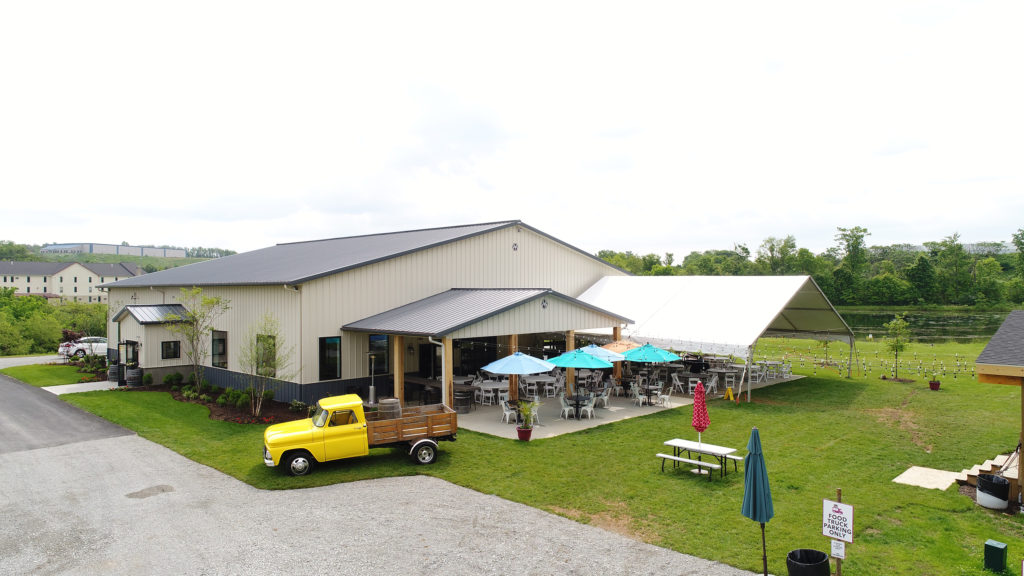
By: Judit Monis, Ph.D.
Early this year I wrote about the Grapevine red blotch virus (GRBV) infection status of vines in the University of California at Davis Foundation block (also known as the Russell Ranch Foundation block). In this article I will update the reader on GRBV biology as well as the disease status of the Russell Ranch foundation block. In spite of all the management activities performed to control the spread of the virus, the latest testing results showed a drastic increase in infection of the vines planted in the Russell Ranch foundation block.
Grapevine Red Blotch Disease is Caused by GRBV
Grapevine red blotch virus is different from most other known grapevine infecting viruses in that its genetic material is DNA, rather than RNA. Both the molecular and structural characterization has placed GRBV in a new genus Grablovirus within the Geminiviridae family. Because grapevine viruses are not mechanically transmissible to grapevines, it has been difficult to demonstrate Koch’s postulates.
The postulates state that a pathogen must be isolated in pure form from a symptomatic plant, later introduced to a healthy plant, and cause the same disease symptoms seen in the original infected plant from which the virus was isolated. Koch’s postulates show the “cause and effect” of a virus, in other words, demonstrate that a specific virus is responsible for the symptoms observed in infected vines. As hard as it has been for researchers to complete Koch’s postulates with grapevine viruses, Dr. Marc Fuchs team at Cornell University was able to show, using recombinant DNA technology, that GRBV genetic material can reproduce red blotch foliar symptoms in red fruited grapevine varieties. This is why now we call this virus Grapevine red blotch and not Grapevine red blotch associated virus (i.e., other grapevine viruses have the associated word because Koch’s postulates have not been completed).
To date it appears that GRBV is a North American virus, although the virus was detected in Chinese, Korean, Swiss, and most recently in Argentine vineyards, it appears that the material originated in North America. In contrast, other viruses such as grapevine leafroll associated viruses have a world-wide distribution (i.e., it is found everywhere grapevines are grown). In spite of the recent discovery of Grapevine red blotch virus, it was found in a UC Davis grapevine herbarium specimen indicating that this virus has been present in Californian vineyards since the 1940s.
Even for an experienced professional like me, sometimes it is difficult to distinguish leafroll from red blotch disease in the vineyard. This is especially true with red-fruited grapevine varieties such as Cabernet Franc, Cabernet Sauvignon, or Pinot Noir. That is why it is so important to confirm the presence of the virus with laboratory diagnostic tests.
Grapevine Red Blotch Disease Transmission and Spread
Grapevine red blotch virus is graft transmissible and predominantly propagated by producing cuttings of infected rootstock and scion material. In the recent years the vectored transmission of GRBV has been determined. Work by researchers at Cornell University and the University of California showed that the three-cornered alfalfa tree hopper (Spissistilus festinus) is able to transmit the virus under laboratory and greenhouse conditions. The three-cornered alfalfa tree hopper insect prefers to feed in legumes, grasses, and shrubs. However, the discovery of a potential vector cannot explain the reason for the sudden discovery and rapid spread of GRBV in vineyards. While research continues to determine if other vectors are capable of transmitting GRBV it is obvious that the rapid expansion of this virus in vineyards was due to unknowingly propagating and grafting cuttings from infected vines.
Do We Really Understand GRBV Biology?
Recent work performed at Cornell University has shown a seasonal and uneven distribution of GRBV in grapevines. This contrasts the work performed in my laboratory with samples from field grown vines. My research program (https://www.researchgate.net/publication/313858753_Symptom_Expression_and_Detection_of_Grapevine_red_blotch_virus_in_Red_and_White_Fruited_Grape_Varieties) showed that red blotch virus can be detected from any portion of the vine in high concentrations. In other words, red blotch virus can be detected in newly expanded as well as mature leaves, petioles, lignified or green canes, as well as cordons and trunks. Further, red blotch virus was detectable throughout the different seasons of the year in samples collected from known infected vineyards in California. The discrepancy might be due to a potential latent period needed for virus to move and colonize vines.
The Russell Ranch Foundation Block Virus Status
Keeping important viruses such as the ones that cause leafroll and red blotch diseases out of productive vineyards relies on clean planting stock programs. In California, the Grapevine Registration and Certification (R&C) is administered by the California Department of Food and Agriculture (CDFA). A Few years ago, a new block with progeny vines produced with tissue culture and thoroughly tested using the “Protocol 2010” were planted in the UC Davis Russell Ranch block. The foundation block is located in close proximity to research plots (some include trials of grapevine virus infected vines) and the town and is routinely tested by the UC Davis Foundation Plant Services (FPS) Personnel. Last year in November, FPS scientists reported the progressive spread of GRBV in the Russell Ranch block. To summarize, four vines were found infected with GRBV in 2017, in 2018 the number increased to 24 vines, in 2019 the testing results yielded over 300 vines infected with the virus. Fortunately, FPS has suspended the sale of vines from the Russell Ranch block until further notice. However, potentially nurseries may have propagated vines from mother plants that were infected with the virus and could continue to disperse the virus to their mother blocks and newly planted vineyards.
Conclusions
Guidelines are not available on the required distance between nursery and/or foundation blocks from commercial or potentially infected vineyards. It is expected that transmission of harmful viruses will continue to occur if certified blocks are not carefully monitored and kept in isolation. The current situation of the CDFA R&C vines demonstrates the need for more applied research to mitigate disease in nursery and foundation blocks. Due to the progressive spread of GRBV in the Russell Ranch Foundation Block, it appears that the only solution to produce clean planting stock is to start anew
Unfortunately, no back up tissue culture material of the varieties planted at the Russell Ranch Foundation Block are available. However, siblings from some of the varieties subjected to tissue culture were planted in the Classic (older) foundation. In the future, these siblings (numbered 02 rather than 01) will be tested using the Protocol 2010 to make them available for purchase. To obtain virus free plants, the meristem tissue culture technique will need to be applied for the elimination of GRVB. Once new plants are produced, these will need to be protected from new infections. For best results, vines should be grown in insect proof greenhouses or screenhouses, and in geographical areas where grapevines are not grown. It is also advisable to keep a backup of all vine material in case infection is detected in the future. In the meanwhile, it will be imperative for nurseries and growers to carefully determine the health status of propagated material prior to distribution and planting to avoid multiplying and introducing infected vines to the vineyard.
Judit Monis, Ph.D. provides specialized services to help growers, vineyard managers, and nursery personnel avoid the propagation and transmission of disease caused by bacteria, fungi, and viruses in their vineyard blocks. Judit (based in California) is fluent in Spanish and is available to consult in all wine grape growing regions of the word. Please visit juditmonis.com for information or contact juditmonis@yahoo.com to request a consulting session at your vineyard.











